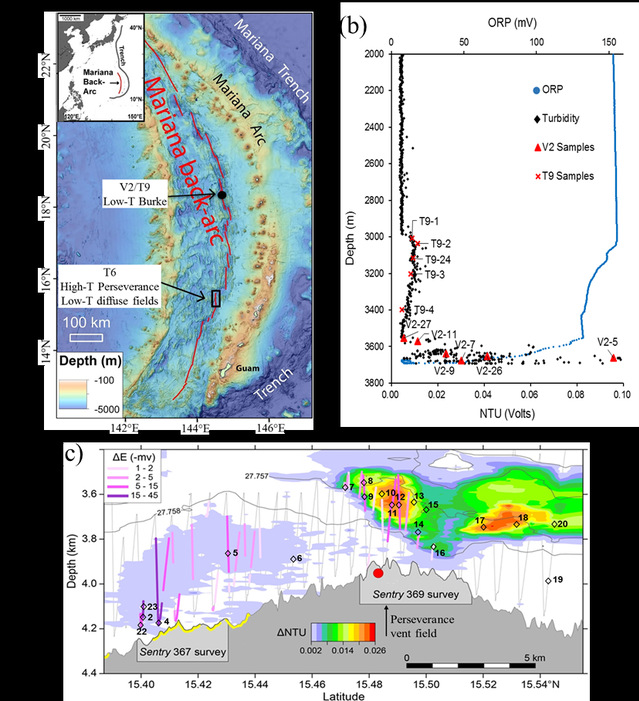Hu Wang a, Joseph A. Resing b, c,Qiaoyang Yan a, Nathaniel J. Buck b, c, Susanna M. Michael b, c, Haiyang Zhou a, Meitong Liu a, Sharon L Walker c, Qunhui Yang a, Fuwu Ji a
a State Key Laboratory of Marine Geology, Tongji University, Shanghai 200092, P R China
b Joint Institute for the Study of the Atmosphere and the Ocean, University of Washington, Seattle, Washington 98105, USA
c Pacific Marine Environmental Laboratory-NOAA, Seattle, Washington 98115, USA
Abstract:
We investigated the speciation of Fe and distributions of Fe-binding ligands in the hydrothermal plumes over high- and low-temperature vents and over diffuse venting fields above the Mariana back-arc spreading center. The concentrations of ligands ([L]) and conditional stability constants (K’FeL) of the natural Fe ligand pool were measured by a reverse titration-competitive ligand exchange-adsorption cathodic stripping voltammetry (RT-CLE-ACSV). The results showed that the buoyant and non-buoyant plume samples over the low-temperature Burke had the highest dissolved Fe/total Fe (DFe/TFe) of 82.2 ± 8.8% and labile Fe/total Fe (FeLab/TFe) of 43.3 ± 5.6%. In contrast, in the plume samples above the high-temperature Perseverance field, TFe had the lowest proportions of DFe (48.8 ± 12.2%) and FeLab (19.4 ± 8.8%). The linear relationships between Fe species and total Mn (TMn) in the buoyant plume over Burke suggest a simple conservative mixing with ambient seawater, which resulted in constant values of DFe/TFe. However, in the non-buoyant plume over Burke, DFe/TFe decreased with plume dilution. The plume samples sourced from the diffuse flow over newly erupted lava had the highest proportion of DFe present as FeLab (74.6 ± 4.0%). The [L] in the buoyant plumes over low-temperature Burke vent were up to 113.6 nM, and the logK’FeL decreased with increasing DFe and [L], suggesting the importance of weaker ligands in stabilizing Fe. For all the plume samples, the organically complexed Fe (FeL) constituted significant proportions of the DFe (29.0 ± 9.3%) and FeLab (57.5 ± 15.6%) fractions. These Fe-binding ligands were likely sourced from diffuse venting fluids adjacent to the venting sites, and may be also produced by microbes within the hydrothermal plumes.
Full article:https://doi.org/10.1016/j.gca.2020.09.016



